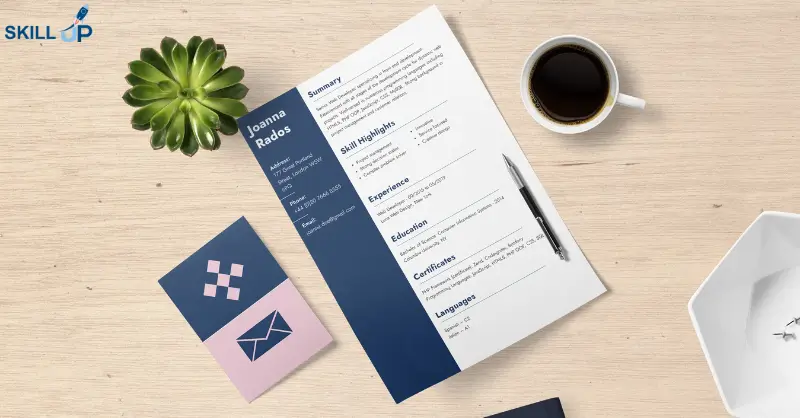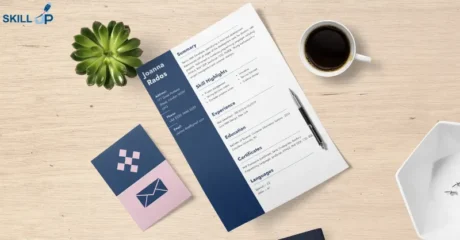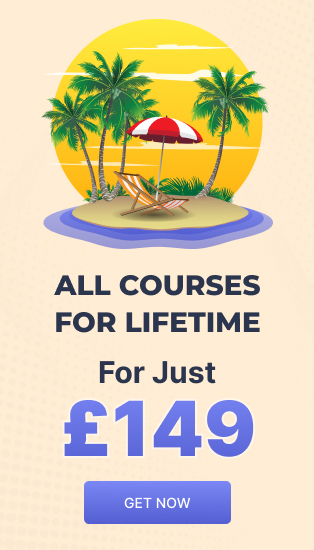
Showing your online learning journey on your CV can really help your applications stand out from the crowd. Taking part in online training shows employers that you have a dedication to learning and want to push yourself to develop new skills to increase your value to employers. In this article, we’ll discuss how to present your online learning journey on your CV to maximise your chances of impressing recruiters and hiring managers.
Table of Contents
Why is online learning important for a CV?
The job market can be an extremely competitive place. It’s not unusual for recruiters and employers to receive hundreds of applications for any given vacancy. In these circumstances, it’s likely that many applicants will share similar qualifications and levels of experience. As such, it becomes essential to find ways of differentiating yourself and standing out from the crowd. You could do so by showing volunteer work or specific career accolades and achievements. Alternatively, online learning is one of the best ways to do this.
By listing your online learning on your CV, you can show employers that you’ve developed a skill set that’s useful for the role. But you can also show valuable qualities, such as initiative and a commitment to lifelong learning. If the subjects you’ve studied in your online training reflect the skills and knowledge required for the job, this will place you in a strong position. But for many positions, simply showing that you’ve got the commitment and dedication to embark on an online learning journey outside your work responsibilities will tell employers a lot about your personality and work ethic.
Where to list online learning on a CV
How you decide to feature your online learning on your CV will probably depend on your career stage, your relevant work experience and your other qualifications. For candidates with plenty of work experience and professional qualifications, online learning can typically sit within its own section in the additional information towards the end of your CV. However, for junior and entry-level applications where you’re lacking depth of work experience and qualifications, online learning could feature more prominently. Either approach can make a positive impression with employers.
Listing online learning on an entry-level CV
If you’re just starting out in your career and have yet to build up a wealth of relevant work experience, you might consider using a functional or skills-based CV format. This approach places your CV skills and education sections towards the top of your document, with any work experience mentioned further down.
In this case, you could feature your online learning in your CV’s education section. This could be particularly useful if you’ve completed online learning that’s relevant to the role you’re applying for, or if your qualifications are otherwise general and not tailored to the role or industry you’re applying to.
Listing online learning on an experienced CV
For more experienced candidates, a traditional, reverse-chronological format is the most typical type of CV layout. This emphasises your work experience above all else. However, this is not to imply that all other activities are unimportant. Indeed, far from it. Employers will likely receive many CVs showcasing similar qualifications and experience, and in this case, it’s the additional, optional sections of a CV that can make all the difference.
The ideal place for listing your online learning on a CV is in a ‘certifications and professional development’ section. In this section, include any training or courses you’ve undertaken that are relevant to the role you’re applying for.
Discussing online learning in your cover letter and interview
Tips to maximise the impact of your online learning
These quick tips can help you to present your online learning in a way that helps you to stand out as a strong candidate among a crowded field of applicants:
– Only mention relevant online training: while it might be tempting to list every course you’ve completed, it’s best to stick only to the most relevant training that showcases skills required for the job. Training and development that’s unrelated to the role is unlikely to make an impression with employers, and takes up valuable space in your CV.
– Fill career gaps with online learning: online courses can be a useful way of showing you’ve made the most of any gaps in your career or time spent away from work. Being proactive and productive with your career downtime by learning new skills will make you more employable and make a positive impression on hiring managers.
– Add the dates of your online training: including course completion or participation dates can help make a more complete timeline of your career and your learning journey. This can help employers assess your progression and commitment to professional development.
– Use keywords for maximum effect: listing your online learning gives you an opportunity to add keywords to your CV that can help you pass any applicant tracking system (ATS) scanning stage.
– Summarise your learning and skills: if you have space, add a brief summary of your learning from each relevant online course. This shows you’re able to process the teaching and take useful lessons from it.
– Use a professional CV template: professional CV templates like those on jobseeker.com can help you to present your online learning in an organised, structured CV format that’s easy to read and catches the eye of hiring managers.
Conclusion
Your online learning journey can be a highly effective addition to your CV. Participating in online training shows employers you’re proactive and committed to professional development, providing a valuable point of difference to other candidates. Pick the most relevant courses you’ve completed and add them either to your CV’s education section or its certifications and professional development section. Show how each course has increased your skills and knowledge in relevant areas to help you stand out from the crowd and leave a lasting impression on recruiters and hiring managers.










